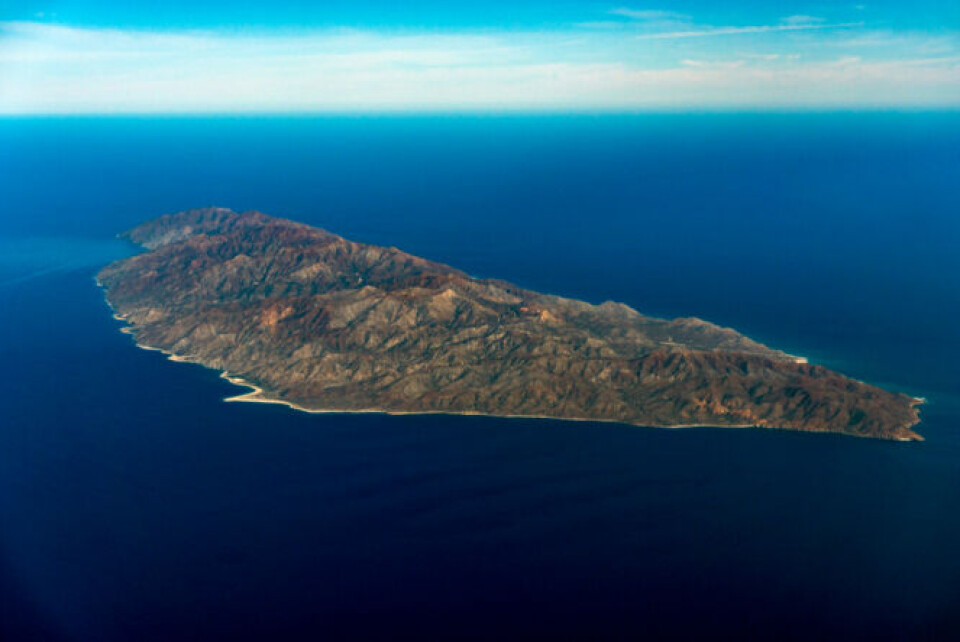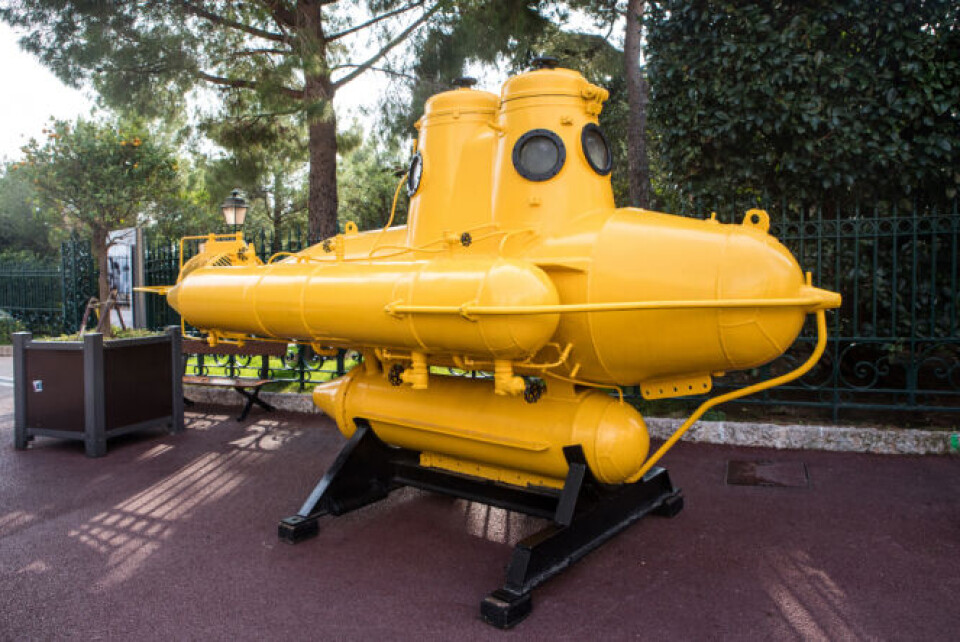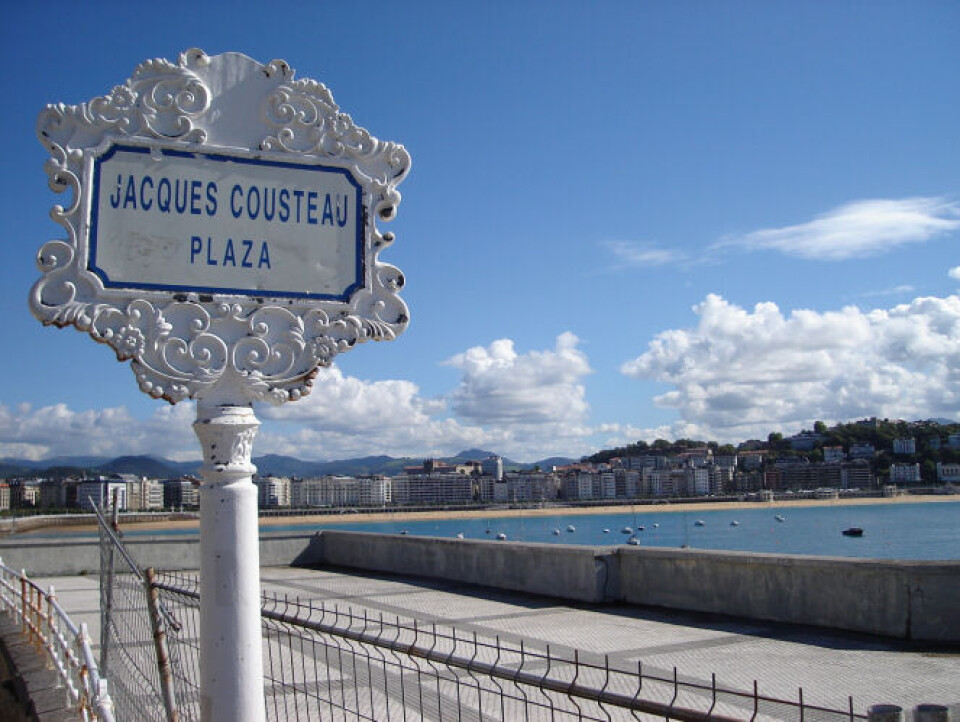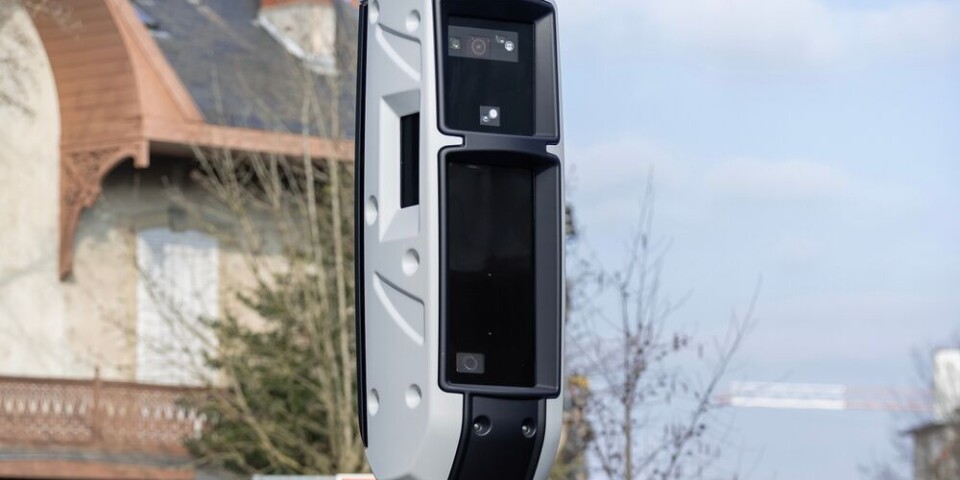-
Profile: Dorothée - France's beloved TV icon and screen mum
Profile of the singer, actress and TV presenter who captivated millions of schoolchildren
-
Martel: the medieval French town home to a 'truffle' train and lavender festival
The small town in the Lot offered refuge to an English throne heir until his death
-
Brittany lighthouse lens removal leads to public outcry
A petition gained over 20,000 signatures, highlighting the ongoing battle over the buildings' heritage in France
Jacques-Yves Cousteau - undersea explorer, filmmaker and so much more
The French naval officer helped millions of people see into the deep through his inventions and productions but he also worked on projects to build three underwater villages in Sudan

Jacques Cousteau (1910-1997) is perhaps most broadly remembered as a media celebrity, and for being one of the world’s first marine eco-warriors.
He came to prominence with his 1953 book, The Silent World: A Story of Undersea Discovery and Adventure. The world he revealed was completely new to most people, and the book was such a success that he was commissioned to turn it into the award-winning documentary The Silent World.
He understood very clearly that his media profile would allow him to finance his serious scientific work however, and was a passionate defender of marine eco-systems and the environment. He was also one of the first scientists to realise that scientific research, explained accessibly, would fascinate the general public, and that raising awareness about environmental issues would be vital to protecting the planet.
His incredibly-successful documentary TV series, The Undersea World of Jacques Cousteau, ran from 1966 to 1976, and a second series The Cousteau Odyssey ran from 1977 to 1982 making him a global household name. Even today a surprising number of people recognise his seafarer’s face under the scarlet bonnet which was his signature look in these programmes.
Born in Saint-André-de-Cubzac (Gironde), Jacques-Yves Cousteau was brought up in France, but also spent time in the US. (As an adult, he usually spoke English.) He joined the French navy in 1930 intending to become a naval pilot but had to abandon the idea after breaking both his arms in an accident.
Jacques Cousteau Island in Mexico, where he led many expeditions. Pic: Andrea Izzotti / Shutterstock

He began exploring under the sea in 1936 when a friend lent him some Fernez underwater goggles, but at first he was only exploring very shallow water. In 1937 he married Simone Melchior, and their son Jean-Michel was born the following year. In 1940 they had a second son, Philippe.
With some friends, he began making documentary films about exploring the sea; producing 18 Metres Deep and Shipwrecks. At the time, deep sea diving simply had not been developed. No-one really knew what was under the waves, so he really was exploring a new frontier, and developing the tools he needed as he went along. In 1943 he was using the very first Aqua-Lung prototypes made in Boulogne-Billancourt which had been developed using his input.
He was still in the navy however, and although he was inclined to be pro-Vichy (and his brother was an avowed Anti-Semite), he saw action in the Mediterranean and after the war received several awards for commando operations carried out with the Allies. He stayed in the navy until 1949, setting up the Underwater Research Group of the French Navy in Toulon (now the Cephismer).
He was involved in clearing mines as well as underwater exploration which led to the development of underwater archaeology, and also small diving vessels. These adventures formed the basis for much of his book The Silent World.
In 1950, finally setting out on his career as a full-time marine explorer, he leased his famous yacht ‘Calypso’ and refitted it as a mobile laboratory. As well as developing diving equipment, Cousteau was fascinated by oceanic flora and fauna.
Whatever struck him as interesting, he investigated. Heading for the Straits of Gibraltar in his research vessel Elie Monier for example, he noticed that a group of porpoises was following the ship. He changed course a few degrees off the optimal course for the Strait and saw that after a few minutes the porpoises diverged back onto the most direct route. He correctly deduced that they knew where they were going, realising that they had a form of sonar sensing, a technology which was at that time a relatively new innovation on submarines.
In 1956, Cousteau won the Palme d’Or at the Cannes Film Festival for his documentary The Silent World, and in 1957 he took over as director of the prestigious Oceanographic Museum of Monaco.
He also developed his famous ‘diving saucer’ SP-350 which could descend to 350 metres and enabled researchers to explore the ocean floor. By 1965 this had increased to a depth of 500 metres. Today this seems quite tame, but at the time it was revolutionary. You can see his other invention: a compact yellow bathyscaphe ‘Anorep I’ installed at the entrance of the Oceanographic Museum for public display. The submarine was built in 1966 and was one of Cousteau’s ‘sea fleas’, as he called his exploratory vessels.
Yellow exploration submarine of Jacques Yves Cousteau front of Museum of Oceanography in Monaco. Pic: Birute Vijeikiene / Shutterstock
He was interested in the idea of saturation; humans remaining under the sea for extended periods of time, even living underwater. There was a vogue for thinking that human colonies could be set up on the moon or other planets, and in that context, it did not seem strange to be considering the idea of living underwater.

He was involved in setting up the Confédération Mondiale des Activités Subaquatiques and experimented with setting up three underwater villages called Précontinent I, II and III. Looking back, the ideas seem outlandish, but the spirit of the day was pushing boundaries, going where no man had gone before.
In 1960, he was one of the leading scientists who opposed the dumping of radioactive waste in the Mediterranean, organising a publicity campaign against the move. This resulted in crowds of women and children blocking the train carrying the waste by sitting on the tracks. The train was turned back and the plan abandoned.
He was already becoming well-known when he signed an American deal to produce The Underwater World of Jacques Cousteau. The shows were incredibly successful, feeding into a general feeling in the second half of the 20th century that humans were more and more exploring all kinds of new worlds.
With his red diver’s bonnet, weather-beaten face, lithe body, French accent and pipe, he was easily recognised around the world.
He was very close to his younger son Philippe, with whom he wrote the book The Shark: Splendid Savage of the Sea in 1970. He was sailing all over the world at this time, and with his sons founded the Cousteau Society for the Protection of Ocean Life in 1973. In 1976 sailing in Greece, he located the wrecks of the HMHS Britannic (sunk by a mine in 1916), and the French 17th century vessel La Thérèse. Tragedy struck however in 1979 when Philippe died in a plane accident in Portugal.
By this time he had separated from his wife, and was in a relationship with Francine Triplet. After Philippe’s death in 1979 he worked with his elder son, Jean-Michel, making more documentaries, appearing on television and in 1980 making two films in Canada: Cries from The Deep and St Lawrence: Stairway to the Sea. That year, Francine gave birth to a daughter, Diane Cousteau (1980) and two years later, she had a son Pierre-Yves Cousteau (1982).
In 1985, Ronald Regan awarded him the Presidential Medal of Freedom, and in 1988 he was elected to the Académie Française. In December 1990, his wife Simone Cousteau died of cancer and six months later he married Francine Triplet. From then on, his relationship with his eldest son began to sour.
Plaza Jacques Cousteau and scenic lookout point in San Sebastian. Pic: Neva Micheva
In 1991, he gave a widely-quoted interview in which he said he favoured population control:

“What should we do to eliminate suffering and disease? It’s a wonderful idea but perhaps not altogether a beneficial one in the long run. If we try to implement it we may jeopardise the future of our species... It’s terrible to have to say this.
World population must be stabilised and to do that we must eliminate 350,000 people per day. This is so horrible to contemplate that we shouldn’t even say it. But the general situation in which we are involved is lamentable.”
In 1995 he sued his eldest son Jean-Michel to prevent him using the family name to advertise ‘Cousteau Fiji Islands Resort’ for business purposes. In 1996, having been accidentally rammed in Singapore by a barge, the Calypso was re-floated and towed back to France.
Jacques Cousteau died of a heart attack in 1997, a fortnight after his 87th birthday leaving a vast oeuvre of books and documentaries plus an environmental protection foundation with around 300,000 members.
He also left a complicated family legacy, his descendants embroiled in court cases and power struggles over his inheritance.
Facts about his nefarious business activities emerged in a series of unauthorised biographies and most ironically of all, it has been speculated that the global marine environment has suffered from Cousteau’s activities. This came from claims that the Oceanographic Museum in Monaco was linked with the introduction of the Caulerpa (so-called ‘killer algae’) which is destroying large swathes of the Mediterranean Sea’s ecosystem - although this has not been proven.
However, Cousteau introduced the world to the wonders of submarine life and persuaded millions that the natural world is fragile and needs protection.
Related stories:
























